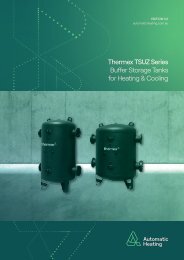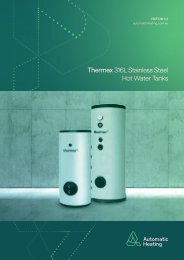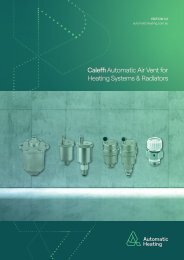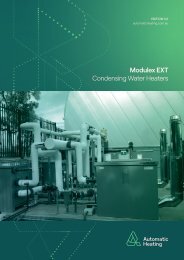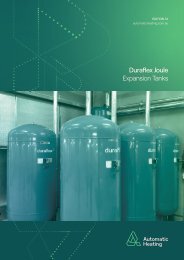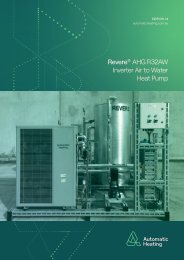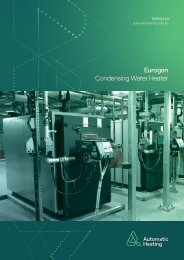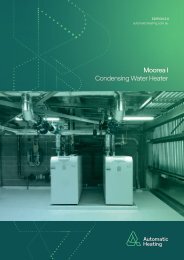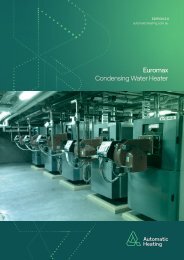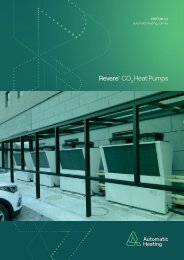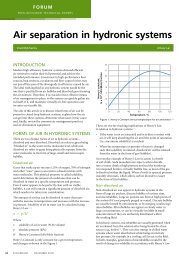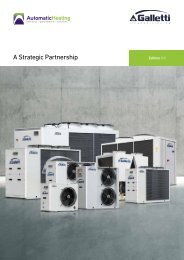AHG Solutions Guide_Edition 2.7
Full Product and Solutions Guide - Automatic Heating Global Pty Ltd
Full Product and Solutions Guide - Automatic Heating Global Pty Ltd
Create successful ePaper yourself
Turn your PDF publications into a flip-book with our unique Google optimized e-Paper software.
Contents<br />
Prefabrication<br />
The best practice in design<br />
Automatic Heating has long advocated the advantages<br />
of prefabricated plant where practical, as have many<br />
contractors in the industry.<br />
“Make no mistake – prefabrication is today’s best practice<br />
design,” says Terry Plaisted, sales manager for Automatic<br />
Heating.<br />
“As well as providing for an accurate installation, the<br />
reduced time onsite reduces labour costs, helps to<br />
condense construction timeframes and ultimately delivers<br />
financial savings to the project.<br />
And by prefabricating in a controlled environment, rather<br />
than in the challenging construction environment, the<br />
process leads to reduced risk and greater accuracy.<br />
“The level of accuracy that can be achieved in a controlled<br />
environment is much greater than that afforded on the<br />
construction site,” he says. “It stands to reason, therefore,<br />
that the prefabricated product is typically far superior<br />
which is good news for the engineer, contractor and<br />
equipment supplier.”<br />
Modular Flue Systems<br />
Automatic Heating’s stainless steel modular flues fit within<br />
any prefabrication strategy.<br />
The system is designed to eliminate the cost of<br />
transporting, craning and installing long, heavy lengths<br />
of flue into position on site, and makes the flueing of<br />
condensing boilers easy.<br />
They are simpler and lighter to install, and designed for<br />
temperatures as high as 400°C.<br />
Each flue length is designed to fit into another and they are<br />
available in different sizes and various lengths, plus elbows<br />
and accessories.<br />
Advantages<br />
Improved accuracy and efficiency<br />
Prefabrication in a controlled assembly environment leads<br />
to greater accuracy of plant construction and reduced<br />
labour costs compared to that on a busy construction site.<br />
Reduced risk and timeframes<br />
A prefabricated plant delivers less risk for all stakeholders<br />
— builder, engineer, contractor and equipment supplier —<br />
as well as reducing construction programs.<br />
Cleaner commissioning<br />
By prefabricating offsite, the plant can be precommissioned,<br />
potential issues identified and corrections made before the<br />
plant even reaches its final destination.<br />
Lifting the completed prefab<br />
frame at Harold Holt Swim<br />
Centre with the pipe work and<br />
hand rails assembled, which<br />
saves time on site.<br />
Precision engineering and<br />
quality assurance pays off as<br />
a platform is lowered onto<br />
the upright support frames<br />
fitted to the roof at Harold<br />
Holt Swim Centre.<br />
283



